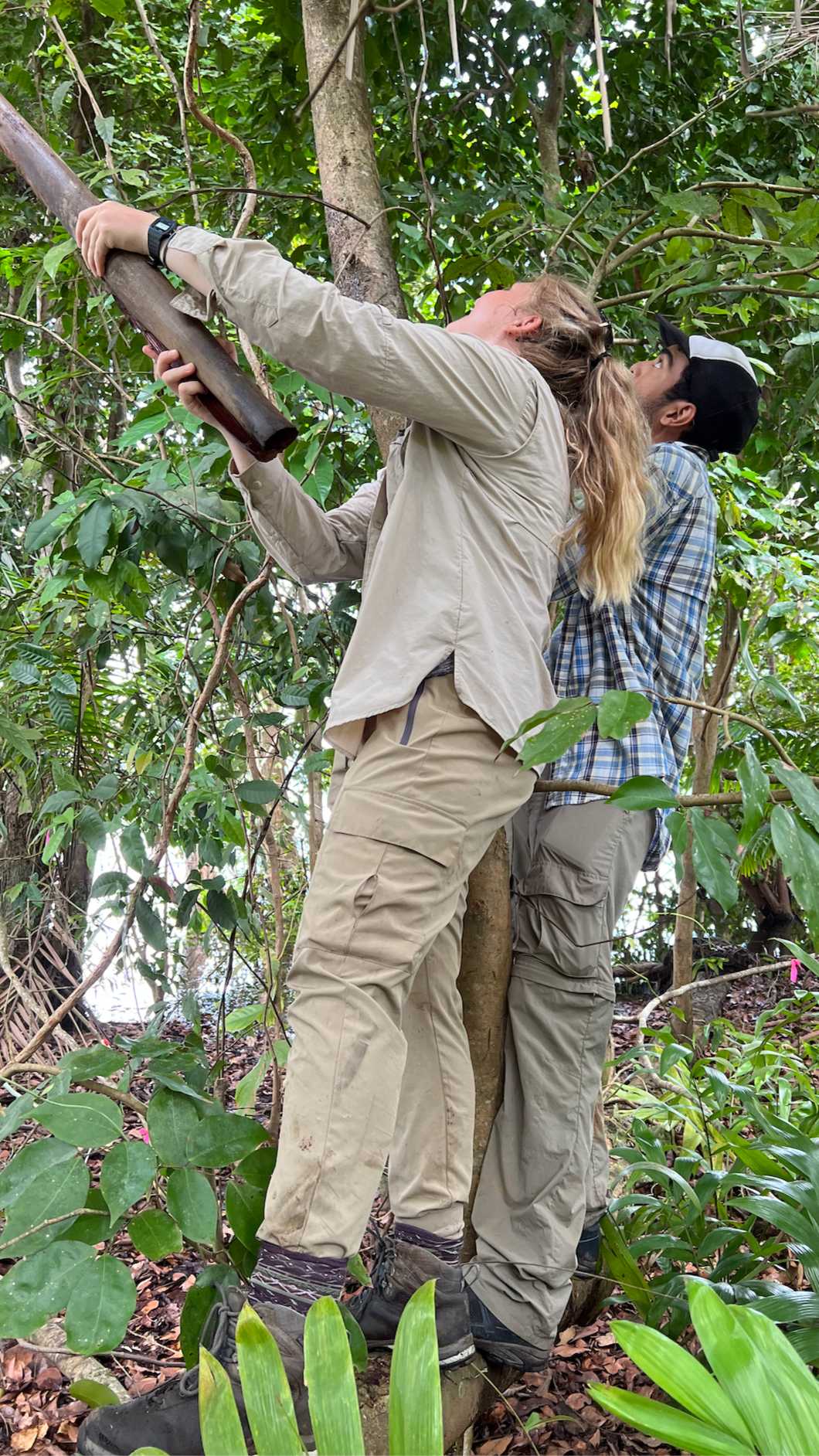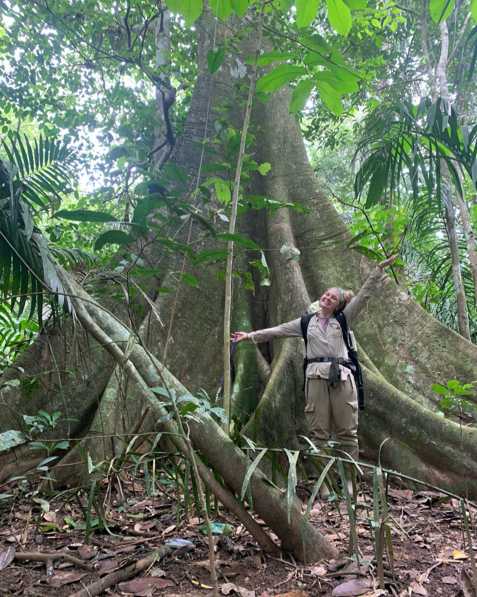Research by a student in the Evolution, Ecology and Conservation Biology (EECB) graduate program recently published on Panamanian lizards has generated more questions on the role of the microbiome than the researchers started with, and it originally had a different hypothesis. Claire Williams wanted to study how warming would change microbes living in the lizards’ guts but found something else was responsible for changing the microbiome too.
Williams is a second-year doctoral student in Mike Logan’s research lab, where she studies the gut microbiomes of anole lizards. Williams met Logan through a co-op she was participating in at her undergraduate university, where she had gained a strong background in microbiology. Logan was recruiting students through the Smithsonian Tropical Research Institute in Panama to study the gut microbiomes of anoles as part of a larger study about how the lizards will respond to a warming environment.
“Microbiomes are a collection of microorganisms and their genes in a specific environment,” Williams explained. “The gut microbiome is the microbes that are living in a host’s gastrointestinal tract.” Microbiomes can include fungi and viruses, but much of the research is focused on the bacteria present.
“It turned out that Mike had a microbiome project he wanted to start, and I was wanting to get some field experience,” Williams said. “I had spent so much time in a lab culturing bacteria, measuring things, really not getting outside. That part of it, being outside and actually seeing what you’re studying… is really amazing.”
Williams traveled to Panama in 2019 as part of the co-op and was the first author on the paper the lab just released with their findings last fall. The research involved catching and transplanting hundreds of lizards in the humid rainforest.
Lizard transplants
The anoles studied in the Logan lab historically lived where ships now float through the Panama Canal. What were once forested hilltops are now islands, and those have changed since the canal was flooded. Isolation on an island allows for rapid changes to take place. The tree canopy, plant species and insect abundance all change on the island, and this can lead to changes in temperature. The researchers had initially planned to study how warming can impact the microbiomes of the lizards by transplanting some of the lizards to the islands, which are warmer, and comparing them to lizards that stayed on the mainland after several years.
Transplanting species from one location to another might have ethical implications in other ecosystems, but because the lizards had historically occupied the space where the islands are, it wasn’t an introduction of species. Williams also pointed out that the islands are very small and have little ecological importance, so introducing the lizards wouldn’t cause harm to the ecosystem.

Some of the lizards on the mainland were put into a greenhouse that would mimic the temperature changes the lizards were experiencing on the island. It was important for the researchers to include a more controlled experiment so they could determine what changes in the gut microbiota were from the warming and what changes were from the different environments the lizards would experience on the islands.
“Using some sort of paired approach is where I think the real power is,” Williams said. She and her colleagues dissected lizards caught in 2017 to collect the founding population sample data. Now the researchers are also able to collect fecal samples, which allows the researchers to track the lizards across their lifespans.
“Fecal samples are a fairly standard way to study microbiomes,” Williams said. “The data you get is somewhat different [from the data you get from dissection], but it’s a good proxy for what’s actually in the microbiome.”
Surprising findings
The researchers collected data from the lizards again in 2019, and what they found surprised them.
“These lizards have gone from the mainland, and they’ve been exposed to this warming on these islands, very different environments, and we expected them to be different, yet that’s not really what we found,” Williams said. “What we found in 2019 was that all the lizards’ [microbiomes] looked similar – on the islands and the mainland.” The data showed that the lizards’ microbiomes were more affected by what year they were sampled than they were by the effect of moving to warmer islands.
“We started thinking about, ‘What is an effect that could occur on a regional level and affect all these populations at the same time?’ And it turns out, there was a really insane drought that year that might have affected the mainland and the island populations in the same way.” Williams and Logan hypothesized that the effect of the drought on the lizards’ microbiomes was so strong, it superseded any differences in the microbiomes from temperature.
It's still unclear why the drought affected the gut microbiome. The drought could have altered the environment the lizards are living in, for example by changing their food sources or the amount of water they’re drinking. And Williams adds that it’s unclear if changes in the microbiome are helping the lizards. The researchers plan to measure additional variables like food abundance to determine the routes through which climate impacts the gut microbiome.
“Just because the microbiome is changing in response to the drought doesn’t mean necessarily that the microbes are enhancing their ability to survive the drought.” There is a lot of work to be done about what role the microbiome plays in the lizards’ survival, and whether it plays a role at all. The focus of Williams’s doctoral thesis is how the microbiome can help organisms adapt to novel environmental conditions like warming and drought, and her research will help clarify the relationships between the lizards and the bacteria living in their guts.

“There’s just really not a lot known, so it is really exciting,” Williams said. “It’s definitely challenging, and also there’s always the possibility that the microbiome is not nearly as important as other aspects, like host gene expression. But we don’t know until we look.”
Williams loves the EECB program for how comprehensive it is. “I get to learn about these methods, and I get to participate in this science that is super integrative. It gives me a lot more ideas than just focusing on microbiology.”
And traveling to a tropical country certainly adds to the appeal for Williams. “It kind of feels a little bit silly that my job is to go to a tropical rainforest and catch lizards all day. Nobody gets to do that!”















